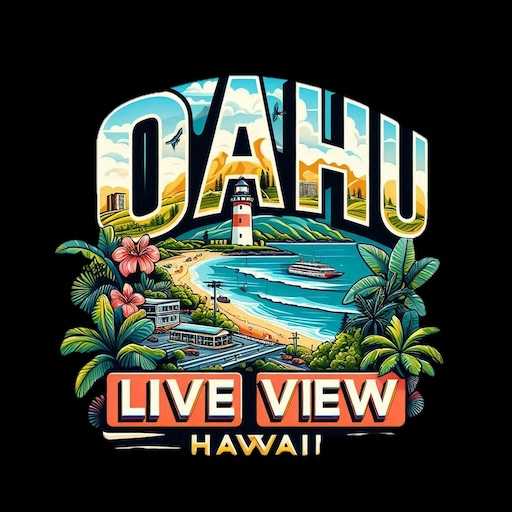Makaha, Oahu Webcams
Makaha FAA Webcam
Makaha: A Journey Through Time on Oahu’s Wild West
Makaha, Oahu Webcams. Makaha, located on the leeward (western) coast of Oahu, is a community renowned for its natural beauty, cultural heritage, and enduring spirit. Surrounded by rugged mountains, pristine beaches, and sweeping ocean views, Makaha has long been a place of significance, from ancient Hawaiian settlements to its modern identity as a haven for surfers and a close-knit local community. This history traces the evolution of Makaha, exploring the forces that have shaped it through time.
Ancient Makaha: The Sacred Valley of Abundance
In ancient Hawaii, Makaha was a thriving ahupua’a, a traditional land division extending from the Wai’anae mountain range to the Pacific Ocean. This system allowed for the efficient use of resources, enabling Hawaiians to live sustainably. The fertile valley of Makaha, fed by freshwater streams, was ideal for agriculture. Early settlers cultivated taro in lo’i (irrigated fields) and grew breadfruit, bananas, and sweet potatoes in the uplands. Fishing was also a vital activity, and residents relied on their intimate knowledge of ocean currents and marine life.
The name “Makaha” translates to “fierce” or “savage” in Hawaiian, which may refer to the powerful waves that break along its shores or the fierce reputation of the region’s warriors in ancient times. It was said that Makaha was home to skilled fighters who defended the valley against rival chiefs and invaders. The area was also a place of spiritual significance, with heiau (sacred temples) built for worship and ceremonies. These structures highlighted the deep connection Hawaiians had with the land, gods, and ancestors.
The Arrival of Western Influence
The late 18th century brought monumental changes to Makaha, as Western explorers, traders, and missionaries arrived in Hawaii. The introduction of new goods, technologies, and ideas disrupted traditional Hawaiian life. By the early 19th century, Hawaii’s social, political, and economic systems were undergoing profound shifts under the influence of the growing Western presence.
Christian missionaries established schools and churches across Oahu, including the Wai’anae region. Their efforts to convert Hawaiians to Christianity introduced new religious practices and Western-style education. While these changes created opportunities for literacy and development, they also contributed to the erosion of traditional Hawaiian customs and beliefs. Additionally, the introduction of Western diseases devastated the Native Hawaiian population, leading to a significant decline in numbers.
The Plantation Era and the Decline of Traditional Practices
In the mid-19th century, Makaha, like much of Oahu, saw the rise of sugarcane and pineapple plantations. The fertile land and sunny climate of the leeward coast made it an ideal location for agriculture. Immigrant laborers from China, Japan, Portugal, and the Philippines arrived to work on the plantations, transforming Makaha into a multicultural community.
While the plantations brought economic opportunities, they also altered the natural landscape. Native forests were cleared, and streams were diverted to irrigate crops, disrupting ecosystems. Many Native Hawaiians were displaced from their ancestral lands and faced economic hardship. The plantation era also saw the decline of traditional subsistence practices as the region shifted to a cash-based economy.
The Rise of Surfing and Tourism
The mid-20th century marked a turning point for Makaha, as it gained international recognition for its stunning beaches and world-class waves. Makaha Beach became a focal point for the burgeoning sport of surfing, attracting wave riders from around the globe. With its powerful winter swells and long, peeling waves, Makaha was ideal for showcasing the art of big-wave surfing.
In 1954, the first Makaha International Surfing Championship was held, putting the area on the map as a premier surf destination. Surfers like Buffalo Keaulana, a local icon and pioneer of Hawaiian surfing, helped popularize the sport and connect it to its cultural roots. Makaha’s surf scene highlighted the spirit of aloha, where respect for the ocean, land, and each other was paramount.
Tourism also began to grow during this time, as visitors were drawn to Makaha’s natural beauty and vibrant culture. However, the development of resorts and vacation homes brought challenges, including concerns about overdevelopment and the impact on local communities and ecosystems.
Makaha Today: A Balance Between Tradition and Modernity
In the 21st century, Makaha remains a unique blend of tradition and modernity. Despite its growth and popularity as a tourist destination, the area retains its local charm and strong sense of community. Many residents take pride in preserving Makaha’s cultural heritage, natural beauty, and values of aloha.
Makaha continues to be a surfing mecca, hosting competitions and events that celebrate Hawaii’s oceanic legacy. The waves at Makaha Beach are a proving ground for surfers and watermen who uphold the traditions of their predecessors. Beyond surfing, the area offers opportunities for hiking, fishing, and cultural exploration.
At the same time, Makaha faces challenges related to housing, infrastructure, and environmental conservation. Efforts to promote sustainable tourism and protect natural resources are ongoing, as community members work to ensure that Makaha’s future aligns with its values.
A Place of Enduring Spirit
Makaha’s history is a testament to the resilience and adaptability of its people. From its roots as a thriving Hawaiian settlement to its rise as a surfing capital, Makaha has navigated the forces of change while remaining true to its identity. The region’s fierce waves, stunning landscapes, and warm-hearted community continue to inspire visitors and residents alike.
Makaha is more than a place—it is a legacy. Its story, shaped by the land, ocean, and people, is a reminder of the beauty and strength that define Hawaii. Whether riding its legendary waves or exploring its lush valleys, one cannot help but feel the spirit of Makaha, where the past and present meet in harmony.
For more information, visit the official Oahu website.
